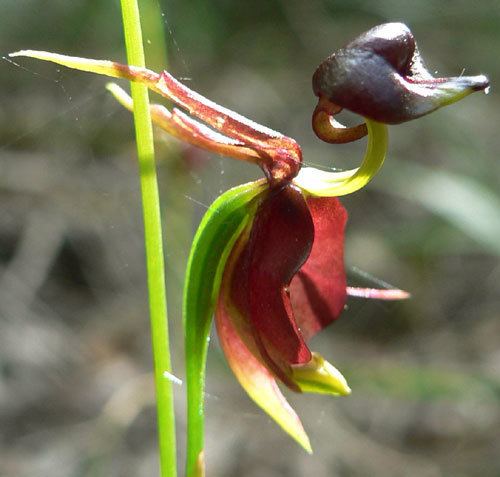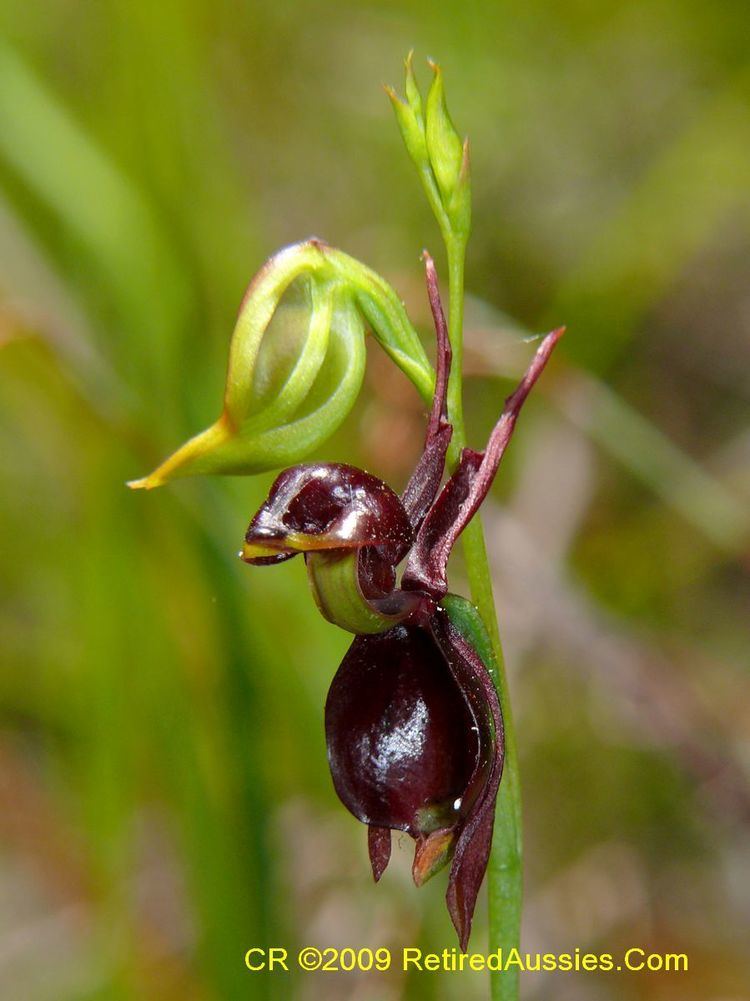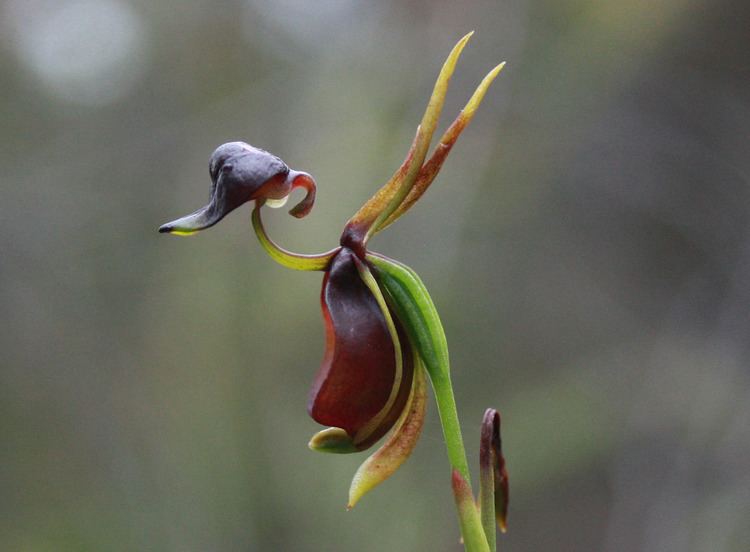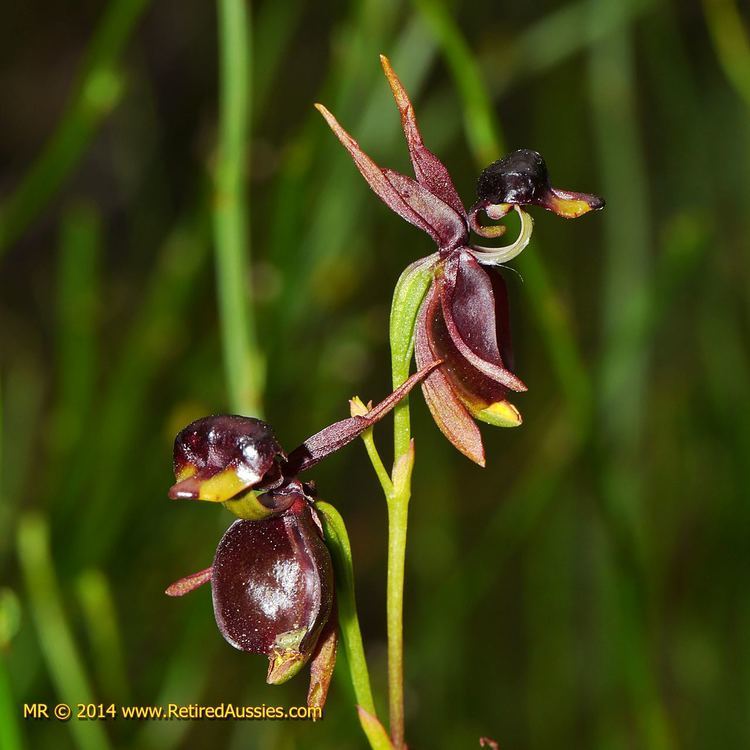Subtribe incertae sedis Scientific name Caleana major Rank Species | Genus CaleanaR.Br. Higher classification Caleana | |
 | ||
Similar Orchids, Dracula simia, Orchis italica, Psychotria elata, Anguloa uniflora | ||
Caleana major, the flying duck orchid, is a small orchid found in eastern and southern Australia. This terrestrial plant features a remarkable flower, resembling a duck in flight. The flower is an attractant to insects, such as male sawflies which pollinate the flower in a process known as pseudocopulation. In 1986 this orchid was featured on an Australian postage stamp.
Contents

Description

Caleana major is encountered as a terrestrial herb, up to 50 centimetres (20 in) tall. Two to four flowers grow on the green stem. The single leaf, appears near the base of the stalk. It is usually prostrate, narrowly lanceolate, to 12 cm (5 in) long and 8 mm (0.3 in) wide, often spotted. The flower is reddish brown, 15–20 mm (0.6–0.8 in) long. In rare cases, the flower can be greenish with dark spots. The plant is pollinated by insects. A sensitive strap is attached to the flower, which is triggered by vibration. Flowering occurs from September to January.
Distribution and habitat

Occurring from Queensland to South Australia, to even Tasmania, this plant is found in eucalyptus woodland in coastal or swampy shrubland and heathland. Mostly near the coast, but occasionally at higher altitudes. Because of the small size, it is a difficult plant to notice in the wild.
Taxonomy

The genus Caleana was named after George Caley, an early botanical collector. As of May 2014, Caleana major is the only species in the genus; two other species (C. minor and C. nigrita) formerly included in this genus are now regarded as members of a different genus, Paracaleana. Latin for "larger", major refers to the contrast with the other, smaller duck orchid, Paracaleana minor.

The original specimen of this plant was collected at Bennelong Point, the present-day site of the Sydney Opera House in September, 1803. In 1810, the species originally appeared in the scientific literature, Prodromus Florae Novae Hollandiae, authored by the prolific Scottish botanist Robert Brown.
Cultivation
Caleana major has been difficult to maintain in cultivation. Plants flower for one or sometimes two years but progressively weaken until they die.
